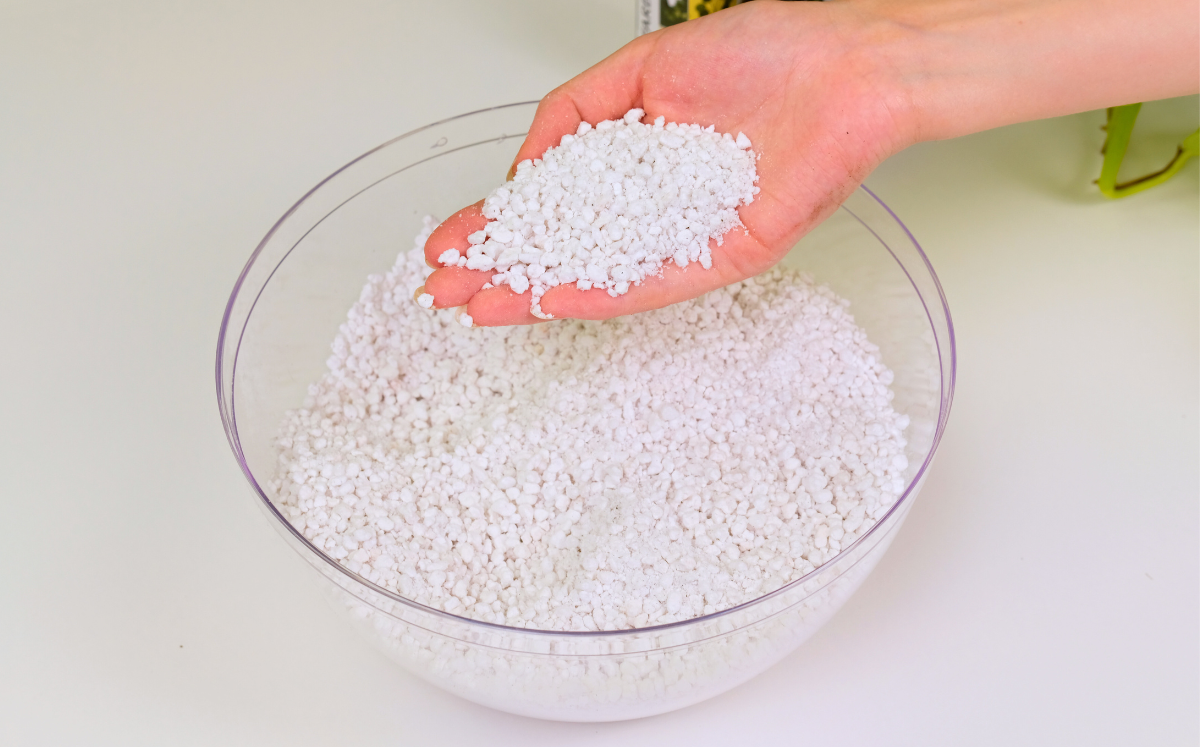Perlite is a volcanic material that provides benefits for a variety of applications, from gardening to insulation in construction. It forms when molten lava cools and solidifies quickly. Perlite comes in many sizes from 1 millimeter to 10 millimeters in diameter. The result is an extremely lightweight material with amazing properties that can help plants grow.
What is Perlite?
Perlite is a white volcanic rock that pops up when exposed to heat
What can you use it for?
Perlite has many uses: In addition to being used in garden beds and pots, perlite can also be used as an insulating material and even as a filter aid. You can often buy it in large bags. It is most commonly used in private homes as a sole mineral substrate or as an additive to potting soil or other mineral material.

Application: soil aggregates
Potting soil is often too compact and not sufficiently aerated. Pest and disease infestations as well as root rot also occur frequently. A solution to this problem can be additives and soil improvers. These are added to the soil or potting soil and either improve it
Is perlite a fertilizer?
Perlite does not store any water or nutrients and therefore does not provide any nutrients like compost does, for example. Therefore, sufficient fertilization is mandatory when using perlite.
You can use the complete FARBIO® product portfolio for your mineral substrates. The FARBIO® NPK organic liquid fertilizer for green plants is very suitable for supplying your plants with the essential nutrients and thus helping them to grow healthily in the long term. However, we note that the organic liquid fertilizer is brown in color and can discolor the water.
Is perlite worth it in the soil?
The volcanic rock has many advantages: It gives potting soil a loose texture and allows plant roots to grow healthily through sufficient oxygen. It is also sterile and pH-neutral, making it suitable for mineral and hydroponic substrates for houseplants. This soil additive is relatively cheap to purchase compared to others and is available in different grain sizes.
Perlite is ideal as a growing material because seedlings and seedlings hardly need any nutrients. Propagating houseplants with moistened perlite also works very well. For larger plants, you should use other substrates, as perlite is very light and does not provide enough support for the plant.
Mix substrate for plants
When adding perlite to conventional soil, it is recommended to incorporate at least 30% to make the most of perlite's properties. Since it can't hold much water, your soil will dry out quicker than with traditional soil. This reduces the risk of waterlogging and prevents the roots from rotting. Components such as biochar, expanded clay, pine bark, pumice, coconut fibers or compost can also be mixed into medium-coarse volcanic perlite. It is important that the ratio of coarse, medium-coarse and fine components is the same. A good culture medium falls apart again after being squeezed in the hand.















